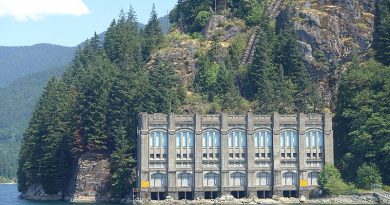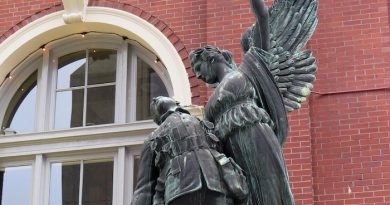Prospect Point Signal Station
From July 27, 1923 until 1939, when the Lions Gate Bridge went up, there was a Signal Station atop Prospect Point, the highest site in Stanley Park, overlooking the entrance to Burrard Inlet. The station was set up there to alert ships entering and leaving the harbour as to tide conditions, wind, other vessels and so on. It was a substantial two-storey building, and besides its workaday function also served as a terrific viewing point for park visitors. When the bridge went up the signal station went down. Now Daniel Frankel, who runs the big concession (gift shop, restaurant, native carvings sales, etc.) at the Point, intends to rebuild it. He has approval from the Parks Board to erect a replica of the signal station at the original location right on the point, and will make it an interpretive centre for the park.
They get four million visitors a year at the Point, and this new structure will increase the area from which those people can get great views.
Daniel showed me a short video he’d had made to show to the Parks Board, and there are some wonderful filmed images, including a big liner going through the Lions Gate before the bridge went up. Projected opening date: 2007.
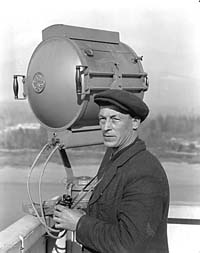
You can read more about the project at the Prospect Point website. To quote it in part: “The Prospect Point Signal Station was at the top of the bluff; the highest point in Stanley Park some 220 feet above sea level . . . Signals were passed between it and the Prospect Point Lighthouse, situated on the rocks below. Today, the site is remembered only through a series of terraces used as lookouts by park visitors. Historically, this was one of the most important buildings in Vancouver’s history, as it was a conduit, or entry point for all port shipping activity.”
The web site also features a short item on S.S. Beaver, the Hudson’s Bay Company steamship, the first steamship on the west coast of North America. The Beaver left England, where she was built at Blackwall, in October 1835, got here in April 1836, after a six-month voyage around the Horn. (No Panama Canal at the time!) She was a rather sizeable vessel: 31 metres or 101 feet long, with a crew of 26, and coming in at 190 tons. She became a very familiar sight on the coast during much of the 19th century.
The Vancouver Maritime Museum informs us that, among her other more prosaic tasks, the Beaver was chartered by the Royal Navy for survey work of the BC coastline.
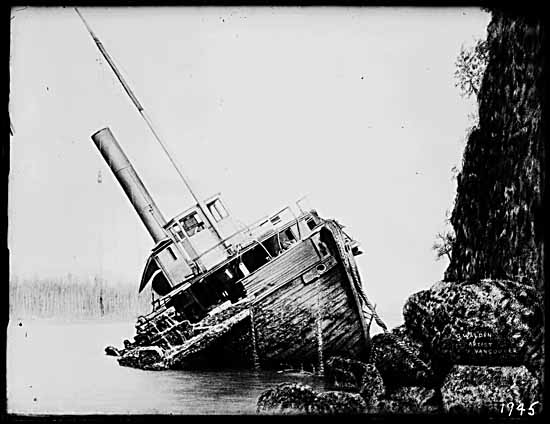
VPL Accession Number: 2923A.
After 52 years of faithful service she ran aground at Prospect Point (which was also known as Calamity Point at the time) on July 26, 1888. “The wreck,” says this archived article from the Maritime Museum website “became a popular Sunday picnic destination for many Vancouverites, some of whom removed pieces for souvenirs. Charles McCain removed about 500 kg of bronze and copper fittings he later turned into memorabilia such as coins, key chains and jewelry. The ship’s boiler and paddlewheel shafts were salvaged and the hull finally broke apart in 1892. The wreck site is currently used to train divers in underwater archaeology techniques. The Vancouver Maritime Museum has an exhibit featuring Beaver’s anchor, paddlewheel shaft, and boiler.”
The Museum’s director, James Delgado, wrote a book on the vessel: The Beaver: First Steamship on the West Coast. (Horsdal and Schubart Publishing Ltd. 1993.

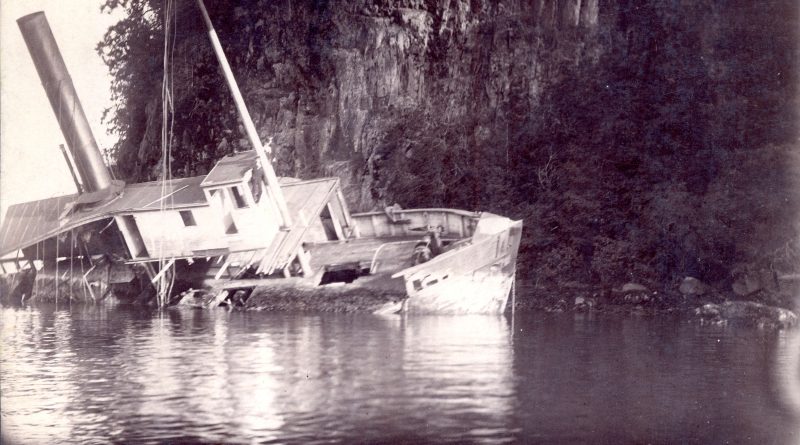
![Fountain Chapel Picnic, 1935 [Photo credit: Gibson Family]](https://vancouverhistory.ca/wp-content/uploads/2021/02/community-390x205.jpg)
